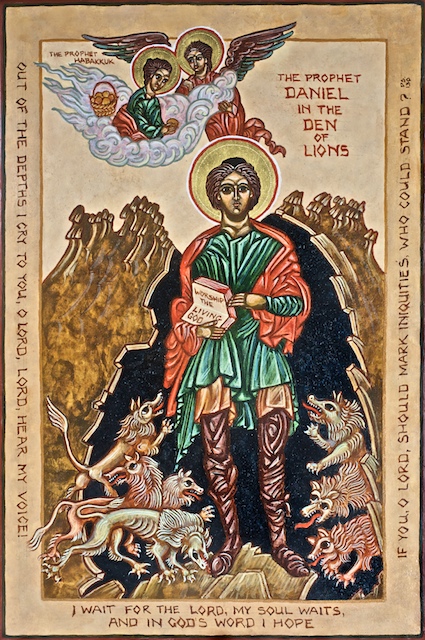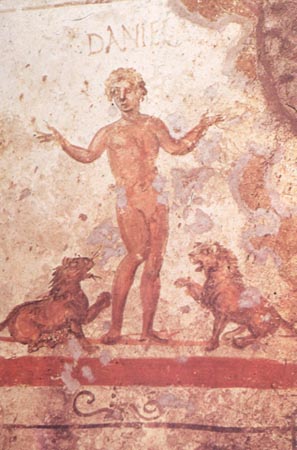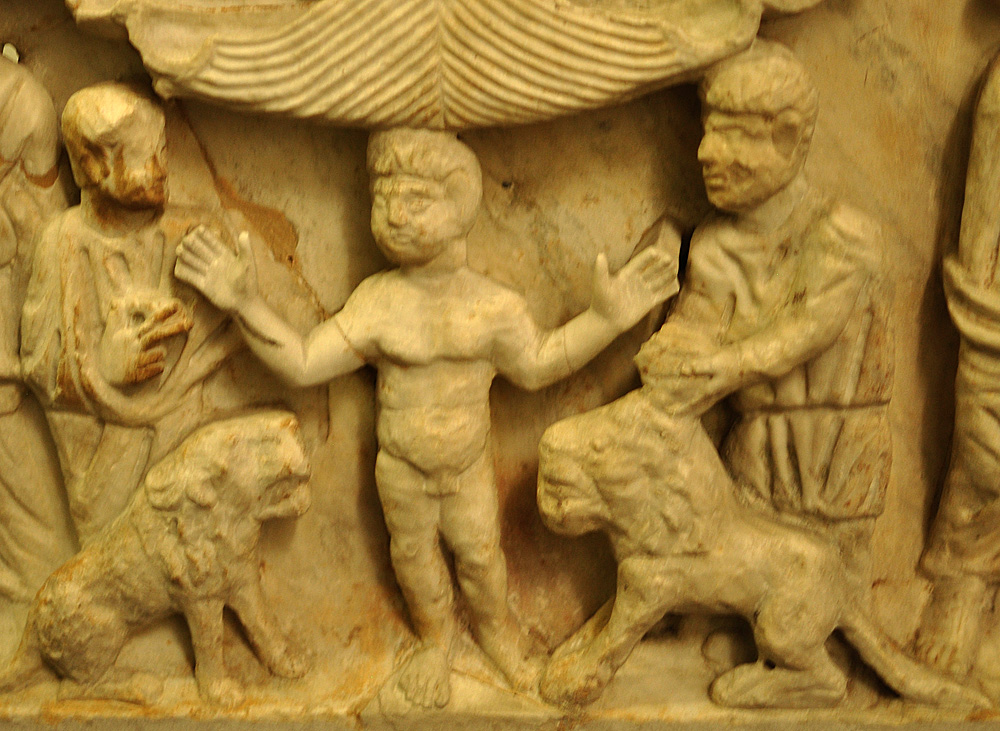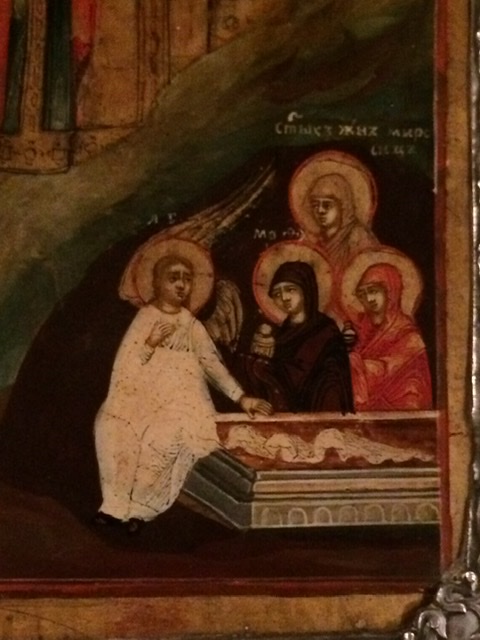
Daniel in the lions’ den (chapter 6 of the Book of Daniel) tells of how the prophet Daniel is saved from lions “because I was found blameless before God” (Daniel 6:22). It parallels and complements chapter 3, the story of Shadrach, Meshach, and Abednego in the burning fiery furnace: each story begins with the jealousy of non-Jews towards successful Jews and an imperial edict requiring them to compromise their religion, and concludes with divine deliverance and a king who confesses the greatness of the God of the Jews and issues an edict of royal protection. Both stories are understood by Christians to foreshadow the Resurrection of Christ.

The king of Babylon orders that no one should pray to any god but himself and that no one should practice any foreign religion. (Christians understood this to be similar to the Roman law insisting that they worship the emperor rather than Christ.) Daniel, a Jewish man promoted to an important government position in Babylon, is accused by his Babylonian enemies of prying to the God of Israel and practicing the Jewish religion. The king is forced to obey his own law although he does not want Daniel to be killed. The king orders Daniel to be thrown into the den of hungry lions and a heavy stone is used to shut the den. When the stone is rolled away, Daniel is found unharmed (“a shepherd to the lions as though they were sheep,” as one Christian hymn says) and the lions attack his enemies instead.

Ancient Christian preachers–such as St. Jerome–have always pointed out that the den of lion’s was a cave sealed by a large stone, just as Jesus’ tomb was a cave sealed by a stone. Daniel was as good as dead when the stone was sealed shut by the king but emerged alive–as if resurrected!–the next morning when the stone was rolled away at dawn. (The lion’s den is sometimes identified as a dry pit, much like the dry pit that Joseph was thrown into by his brothers before they sold him into slavery in Egypt. That pit is also sometimes seen as an anticipation of Christ’s tomb, just as Joseph is seen as a type or anticipation of Christ. The lions–the powers of Death–are tamed by Daniel just as Christ tamed Death by his own death and burial.
An early (2nd century) commentary attributed to Hippolytus of Rome tells us that “… when the angel appeared in the den, the wild beasts were tamed and the lions, wagging their tails at [Daniel], rejoiced as being subjected by a new Adam. They, licking the holy feet of Daniel, rolled around to taste the soles of his feet and they longed to accompany him. For if we believe that, after Paul was condemned to beasts and that a lion was set upon him, it reclined at his feet and licked him all around, how do we not also believe what happened to Daniel…?”
Hippolytus goes on to tell us, “You see, Babylon is the world today, the satraps are its authorities, Darius is their king, the den is Hades, the lions are punishing angels. And so imitate the blessed Daniel who did not fear the satraps and do not obey a human decree, so that after being cast into the den of lions you may be guarded by the angel, and you may tame beasts, and you may be worshipped by them as a slave of God and no destruction may be found in you, but being alive you may be brought up from the den and may be found as a sharer of the resurrection and you may rule over your enemies and you may always give thanks to the living God. For to him be glory and might unto the endless ages of ages. Amen.”
You can read more of the commentary on Daniel by Hippolytus of Rome here.


